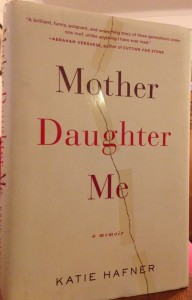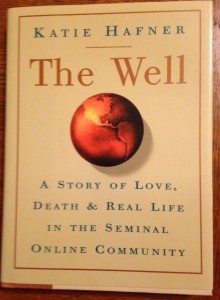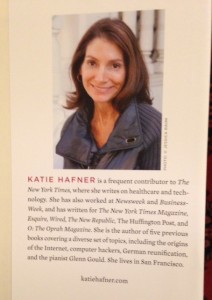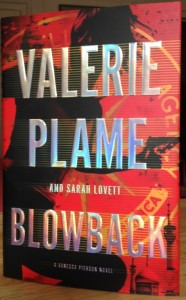Questioning the Critical Reaction to Ben Urwand’s “The Collaboration: Hollywood’s Pact w/Hitler”
 Readers here may recall I’ve previously written about Ben Urwand’s book The Collaboration: Hollywood’s Pact with Hitler. The first time was last June, in Still More to Learn about Corporations’ Complicity with the Third Reich, after the NY Times’ Jennifer Schuessler wrote a preview story on Urwand, a young Australian* scholar, and his thesis: that major Hollywood studios, including many of its key moguls including Jack Warner, Samuel Goldwyn, and Louis B. Mayer, worked with the Third Reich to make their movies acceptable to the Nazis, thus permitting them to continue being shown to German audiences. Urwand contends this “collaboration” started before WWII, and continued during the war itself. The book has now been officially published, and as I expected, there is criticism of it and the author. I know from my involvement with independent scholar Edwin Black‘s IBM and the Holocaust: The Strategic Alliance Between Nazi Germany and America’s Most Powerful Corporation (2001), that writers who tackle big targets get the most criticism. Moreover, Urwand is something of an unconventional scholar–he holds no teaching position, is a Junior Fellow of of the Society of Fellows at Harvard University, and has a biography that includes time spent as a member of the successful rock n’ roll band, The Attachments.
Readers here may recall I’ve previously written about Ben Urwand’s book The Collaboration: Hollywood’s Pact with Hitler. The first time was last June, in Still More to Learn about Corporations’ Complicity with the Third Reich, after the NY Times’ Jennifer Schuessler wrote a preview story on Urwand, a young Australian* scholar, and his thesis: that major Hollywood studios, including many of its key moguls including Jack Warner, Samuel Goldwyn, and Louis B. Mayer, worked with the Third Reich to make their movies acceptable to the Nazis, thus permitting them to continue being shown to German audiences. Urwand contends this “collaboration” started before WWII, and continued during the war itself. The book has now been officially published, and as I expected, there is criticism of it and the author. I know from my involvement with independent scholar Edwin Black‘s IBM and the Holocaust: The Strategic Alliance Between Nazi Germany and America’s Most Powerful Corporation (2001), that writers who tackle big targets get the most criticism. Moreover, Urwand is something of an unconventional scholar–he holds no teaching position, is a Junior Fellow of of the Society of Fellows at Harvard University, and has a biography that includes time spent as a member of the successful rock n’ roll band, The Attachments.
Vociferous criticism has come from New Yorker film critic David Denby, and film historian David Thomson. I respect both of them as writers, but Denby’s claim that much of what’s in the book was already known, is not accurate. Urwand’s sources included archives and business records that no English-speaking historian had ever worked with, so how can the book fail to contain new material? Even if it were correct, can there no new interpretations of previously examined events? Though I don’t agree with the jaded Denby or the skeptical Thomson, I don’t consider them to be arguing in bad faith.
However, some of the other commentary has been way over the top, and coming from questionable sources replete with big credibility issues. For instance, a grandniece of Louis B. Mayer, Alicia Mayer,* who keeps the family flame burning with a website called Hollywood Essays, is campaigning to discredit Urwand’s book, and is getting some coverage doing so. Outlets covering her should ask about and report on the large personal stake she has in seeing her great-uncle exonerated by history. Her comments ought to be viewed with great skepticism. There is a slight hysteria in her attitude, as in the opening line of one piece, she pleads with readers: “I need your help. Imagine for a moment that your family has been accused of collaborating with Hitler and the Nazis.” Her plaint doesn’t address the substance of the book, only suggests how horrible is to be a descendant of someone accused of bad conduct in business. In a bizarre twist, she’s even going after the publicity firm that’s working with Urwand and Harvard University Press:
“After a cunning and manipulative pre-launch campaign by Goldberg McDuffie Communications (GMC) for Ben Urwand’s The Collaboration: Hollywood’s Pact with Hitler, which resulted in odd, gushing ‘reviews’ for the book back in late June, the tide has now turned and negative reviews (scroll down) are flowing just as the book is released. Even as an editor, it never occurred to me that book publicity could have a dark side but Lynn Goldberg, Megan Beatie and Kathleen Zrelak of GMC have orchestrated interviews, coverage and appearances for the perennially grim-looking Urwand, that will in hindsight appear unworthy at best, and sinister at worst.”
This is weird, ad hominem crap that should utterly disqualify the party slinging the stuff from being taken at all seriously.
An underlying subtext here, which probably explains some of the vituperation directed toward Urwand, is that while he is himself Jewish, some people question his motives in laying blame on the men that ran some of the big studios, who happened to be Jewish, as if no co-religionist should find fault with a fellow member of the tribe. Such parochial defensiveness is an extreme response to a scholar’s work. Personal unease over the charge that Jewish moguls in Hollywood let personal self-interest drive their policy toward the Third Reich is blinding some critics from giving a fair reading to Urwand’s book.
There’s even one attack from a blogger* who seeks to call in to question Urwand’s Jewishness because it was reported he ate a lobster salad (non-kosher) during an interview with a reporter. Alicia Mayer, along with Denby demanded that Urwand’s Harvard University Press withdraw the book from distribution, “correct” it according to their reading of it, and then only then re-release it! Were such steps ever taken it would be an appalling abuse of free speech and the moral right of an author to follow historical evidence and publish the results as they see fit.
Urwand and his book do have defenders. Among them are Sir Richard Evans, Regius Professor of History and President of Wolfson College at Cambridge University, a leading figure in the study of 20th Century Germany. He endorsed The Collaboration with the statement below that is printed on the book and continues to defend it vigorously, especially on his twitter feed, @RichardEvans36.
“Full of startling and surprising revelations, presented in exemplary fashion, without any moralizing or sensationalism. The Collaboration shows how Hollywood and especially the big studios went along with German demands to censor movies not only before but especially after the Nazi seizure of power.”
I will continue to write about Urwand’s book in the weeks to come, as I complete my own reading of it. Meantime, here’s a video of Urwand discussing his work.
* Oddly, Australia is a recurring motif here, as Urwand, Alicia Mayer, and the blogger who questioned why Urwand was eating lobster salad are all from Australia. Please note I have chosen not to link to the websites of Alicia Mayer and the other blogger from Australia.









